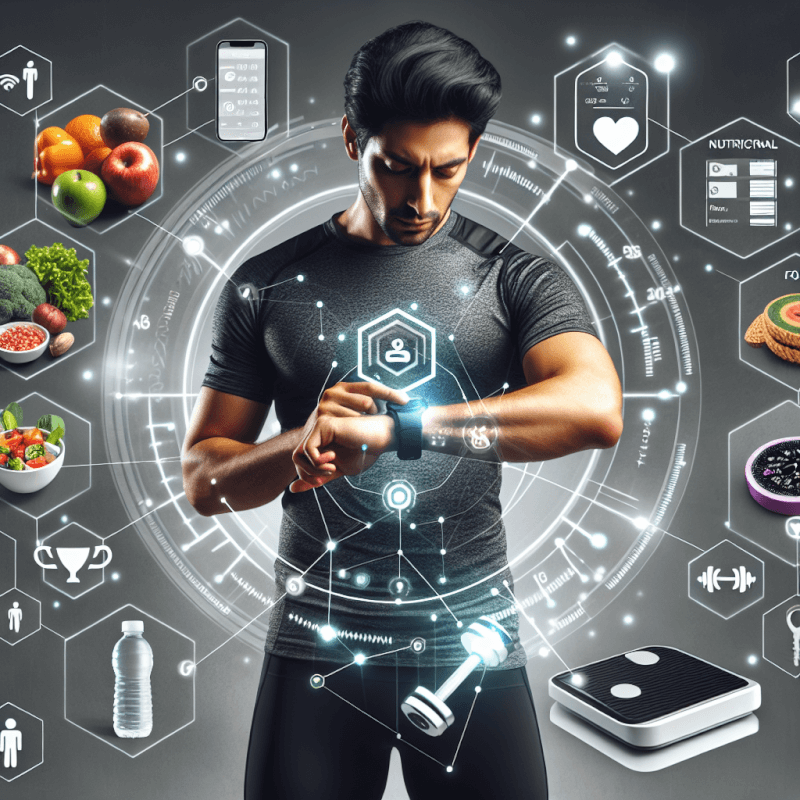Want to achieve your nutrition and fitness goals more effectively? Look no further than technology! With the advancements in digital tools, tracking your progress has never been easier. Whether it’s counting calories, monitoring your heart rate, or keeping tabs on your workouts, technology offers a multitude of apps and devices to help you stay on track. By leveraging these technological resources, you can easily incorporate healthy habits into your daily routine and stay motivated on your fitness journey. So, let’s explore the various ways you can utilize technology to track your nutrition and fitness goals and pave the way for a healthier and fitter you!
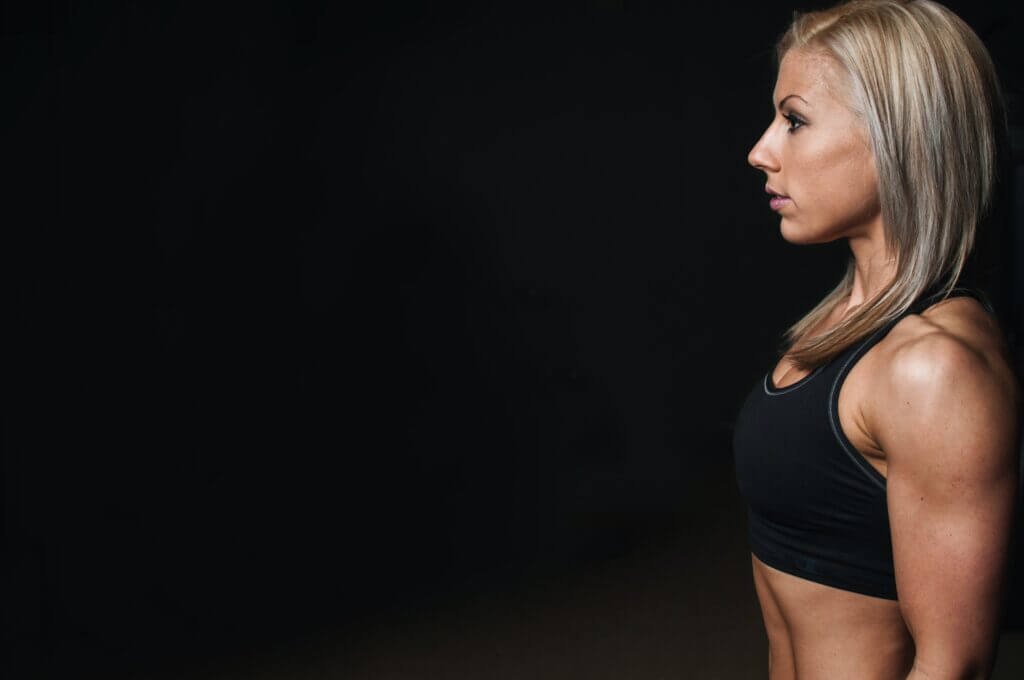
Benefits of Using Technology for Tracking Nutrition and Fitness Goals
Convenience
Using technology to track your nutrition and fitness goals offers convenience that traditional methods may not provide. With just a few taps on your smartphone or clicks on your computer, you can easily log your meals, track your workouts, and monitor your progress. This eliminates the need for manual record-keeping, making it easier for you to stay consistent and committed to your goals.
Accuracy
One of the key advantages of using technology for tracking nutrition and fitness is the accuracy it provides. Many tracking apps and devices have extensive databases of food items, allowing you to accurately log your calorie intake and track your macronutrient consumption. Additionally, wearable devices such as fitness trackers and heart rate monitors can provide real-time data on your physical activity and heart rate, giving you a more accurate picture of your fitness efforts.
Motivation
Technology can be a powerful motivator when it comes to tracking your nutrition and fitness goals. Many tracking apps and devices offer features like goal setting, progress tracking, and reminders, which can help keep you motivated and focused on your goals. Seeing your progress visually and receiving notifications that remind you to stay active or make healthier food choices can make the journey more exciting and rewarding.
Personalization
Technology allows for a high level of personalization when it comes to tracking your nutrition and fitness goals. Many tracking apps and devices allow you to set personalized goals based on your age, weight, height, and activity level. This means that the tracking experience is tailored to you and your individual needs, making it more likely that you will stick to your goals and see results.
Top Nutrition and Fitness Tracking Apps
MyFitnessPal
MyFitnessPal is a popular nutrition and fitness tracking app that offers a comprehensive set of features. It allows you to log your meals, track your calorie intake, and monitor your macronutrient consumption. The app also offers a barcode scanner and access to a large food database, making it easy to track your nutrition accurately. Additionally, MyFitnessPal integrates with various other fitness apps and devices, such as fitness trackers and smart scales, to provide a more holistic tracking experience.
Lose It!
Lose It! is another top-rated nutrition and fitness tracking app that offers a user-friendly interface and a range of helpful features. It allows you to set personalized goals, track your meals and calories, and monitor your progress over time. The app also provides a barcode scanner and a large food database, making it easy to log your meals accurately. In addition, Lose It! offers a social aspect, allowing you to connect with friends and join challenges for extra motivation.
Fooducate
Fooducate is a unique nutrition tracking app that not only helps you log your meals and track your calorie intake but also provides personalized nutrition advice. The app evaluates the nutritional value of the foods you consume and offers recommendations for healthier alternatives. With Fooducate, you can gain a deeper understanding of the nutritional content of your food choices and make more informed decisions.
MyPlate
MyPlate is an intuitive nutrition and fitness tracking app developed by Livestrong. It allows you to track your meals, nutritional intake, and physical activity easily. The app offers a large database of foods and recipes, making it easy to log your meals accurately. MyPlate also provides personalized recommendations and goal tracking features to help keep you on track and motivated.
Fitbit
Fitbit is not only known for its popular fitness trackers but also for its comprehensive health and fitness app. The Fitbit app allows you to track your steps, workouts, sleep, and nutrition. It syncs with Fitbit’s wearable devices, providing you with real-time data on your physical activity and heart rate. The app also offers challenges, goal setting features, and a supportive community to keep you motivated throughout your fitness journey.
Google Fit
Google Fit is a versatile fitness tracking app that can be used on both Android and iOS devices. It allows you to track various activities, such as steps, distance, and calories burned. The app utilizes your phone’s sensors or can be synced with compatible wearable devices to provide accurate tracking of your physical activity. Google Fit also integrates with other popular fitness apps and devices, making it easy to gather data from multiple sources.

Using Wearable Devices for Tracking Fitness Goals
Fitness Trackers
Fitness trackers, also known as activity trackers, are wearable devices designed to monitor and track your physical activity. They usually come in the form of wristbands or smartwatches and can track metrics such as steps taken, distance traveled, calories burned, and even sleep quality. Fitness trackers often sync with companion apps on your smartphone, allowing you to easily view and analyze your activity data. These devices can provide you with real-time feedback, helping you stay motivated and accountable to your fitness goals.
Smartwatches
Smartwatches, such as those made by Apple, Samsung, or Garmin, offer a wide range of features beyond fitness tracking. In addition to tracking your physical activity, smartwatches can display notifications, track your heart rate, and even allow you to make phone calls or send messages. These devices often have built-in GPS capabilities, making them ideal for tracking outdoor activities like running or cycling. With their sleek designs and multiple functionalities, smartwatches can be a stylish and convenient way to track your fitness goals.
Heart Rate Monitors
Heart rate monitors, either as standalone devices or integrated into fitness trackers or smartwatches, can be incredibly useful for tracking your fitness goals. By monitoring your heart rate during exercise, you can gauge the intensity of your workouts and ensure that you are pushing yourself enough to see progress. Heart rate data can also be useful in determining your cardiovascular health and tracking changes over time. With accurate heart rate data, you can optimize your workouts and ensure that you are making the most of your fitness efforts.
Features to Look for in a Nutrition and Fitness Tracking App
Calorie and Macronutrient Tracking
A comprehensive nutrition and fitness tracking app should allow you to track your calorie intake and macronutrient consumption easily. Look for an app that has a large food database, preferably including both generic and branded food items, and offers the ability to manually enter custom foods. The app should also provide a breakdown of your macronutrient intake, including carbohydrates, proteins, and fats, to help you maintain a balanced diet.
Food Database and Barcode Scanner
Having a robust food database and a barcode scanner in your tracking app can make logging meals quicker and more accurate. Look for an app that has a wide range of food items and allows you to easily scan the barcode of packaged foods for automatic input of nutrition information. This feature eliminates the need for manual data entry and ensures the accuracy of your nutrition tracking.
Meal Planning and Logging
An effective nutrition and fitness tracking app should include features for meal planning and logging. Look for an app that allows you to plan your meals in advance, create recipes, and save favorite meals for easy logging in the future. The ability to schedule meals and set reminders for eating can help you stay on track with your nutrition goals and make healthier food choices throughout the day.
Exercise Tracking and Workouts
To fully monitor your fitness goals, it’s essential to choose an app that includes exercise tracking and workout features. Look for an app that offers a variety of exercises and allows you to log your workouts easily. The app should also provide options for tracking different exercise metrics, such as duration, intensity, and distance. Additionally, look for features like exercise reminders and progress tracking to help you stay motivated and monitor your fitness improvements.
Progress and Trends Analysis
Tracking your progress over time is crucial for staying motivated and seeing results. Choose an app that offers comprehensive progress tracking and trend analysis features. Look for charts and graphs that display your nutrition and fitness data, such as weight, body measurements, calorie intake, and workout frequency. These visual representations can help you identify patterns, track your performance trends, and make informed adjustments to your goals.
Community and Social Features
Having a supportive community can greatly enhance your tracking experience and provide you with additional motivation. Look for an app that offers social features, such as the ability to connect with friends, join groups or challenges, and share your progress. The option to interact with others who share similar goals can help create accountability, provide support, and foster healthy competition.
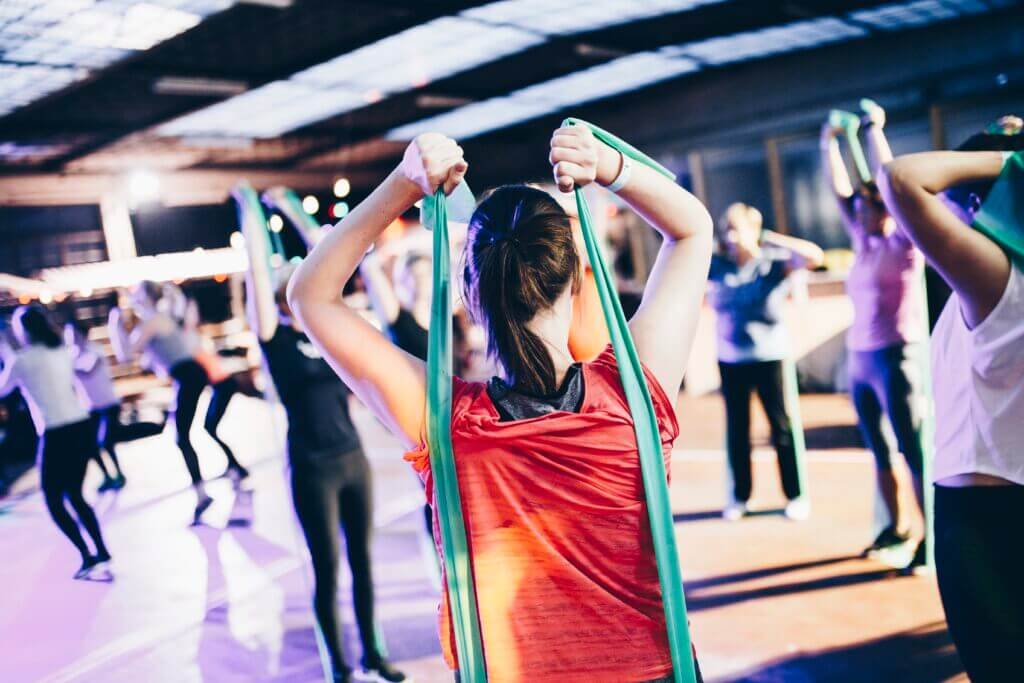
How to Set Effective Nutrition and Fitness Goals
SMART Goals Method
Setting SMART goals is a proven method for effective goal setting. SMART stands for Specific, Measurable, Attainable, Relevant, and Time-bound. When setting your nutrition and fitness goals, make sure they are specific and clearly defined. For example, instead of saying “I want to eat healthier,” specify what healthier eating means to you, such as “I will eat five servings of fruits and vegetables every day.” Ensure that your goals are measurable so that you can track your progress objectively. Make sure your goals are realistic and attainable, as overly challenging goals can lead to frustration and lack of motivation. Moreover, ensure that your goals are relevant to your overall health and well-being. Lastly, set a timeframe for achieving your goals to create a sense of urgency and focus.
Consulting with a Professional
If you’re unsure about setting effective nutrition and fitness goals on your own, consider consulting with a professional. Registered dietitians and certified personal trainers can provide expert guidance and help tailor your goals to your individual needs and abilities. They can also help you navigate through any challenges or limitations you might face during your journey.
Sustainable and Realistic Approach
When setting nutrition and fitness goals, it’s crucial to take a sustainable and realistic approach. Often, people are tempted to make drastic changes or set lofty goals, but such approaches can be unsustainable and lead to disappointment. Instead, focus on making gradual, manageable changes to your diet and activity levels. Set goals that you can realistically achieve over the long term. This way, you can develop sustainable habits that will support your health and fitness goals in the future.
Tips for Using Technology to Track Nutrition and Fitness Goals
Be Consistent and Accurate
To get the most out of technology for tracking your nutrition and fitness goals, it’s important to be consistent and accurate in your tracking. Make a habit of logging your meals and workouts regularly, and be diligent in accurately recording the information. By consistently and accurately tracking your data, you will have a clearer picture of your progress and be able to make informed decisions about your habits.
Track Your Progress Regularly
Tracking your progress regularly is essential to keep yourself motivated and accountable. Set aside time each week to review your nutrition and fitness data, including your caloric intake, macronutrient breakdown, exercise frequency, and any other metrics relevant to your goals. By monitoring your progress, you can identify areas for improvement, celebrate your successes, and adjust your goals accordingly.
Use Reminders and Notifications
Take advantage of the reminder and notification features in your tracking apps or wearable devices. Set reminders for meal times, workouts, or hydration to help you stay on track with your goals. Enable notifications that provide encouraging messages, tips, or progress updates to keep you motivated and engaged in your fitness journey.
Find Accountability and Support
Technology can provide a wide range of options for finding accountability and support. Join online fitness communities, participate in challenges, or connect with friends who have similar goals. Sharing your progress, challenges, and achievements with others can provide a sense of accountability and encouragement. Consider finding a workout buddy or hiring a virtual fitness coach who can provide support and guidance throughout your journey.
Explore Additional Features and Integrations
Most nutrition and fitness tracking apps offer additional features and integrations that can enhance your experience. Explore these features to find ones that suit your goals and preferences. For example, some apps offer recipe builders, personalized meal plans, or integration with recipe apps to simplify meal preparation. Others may provide guided workout programs, allow you to connect with a virtual personal trainer, or integrate with smart scales for a more holistic tracking experience. Take the time to explore these options and find what works best for you.
Take Advantage of Data and Insights
Tracking your nutrition and fitness goals with technology provides you with a wealth of data and insights. Use this information to gain a deeper understanding of your habits, identify areas for improvement, and make informed decisions. Look for patterns, analyze trends, and use the data to optimize your nutrition and fitness strategies. With the right interpretation and application of the data, you can make meaningful progress in achieving your goals.
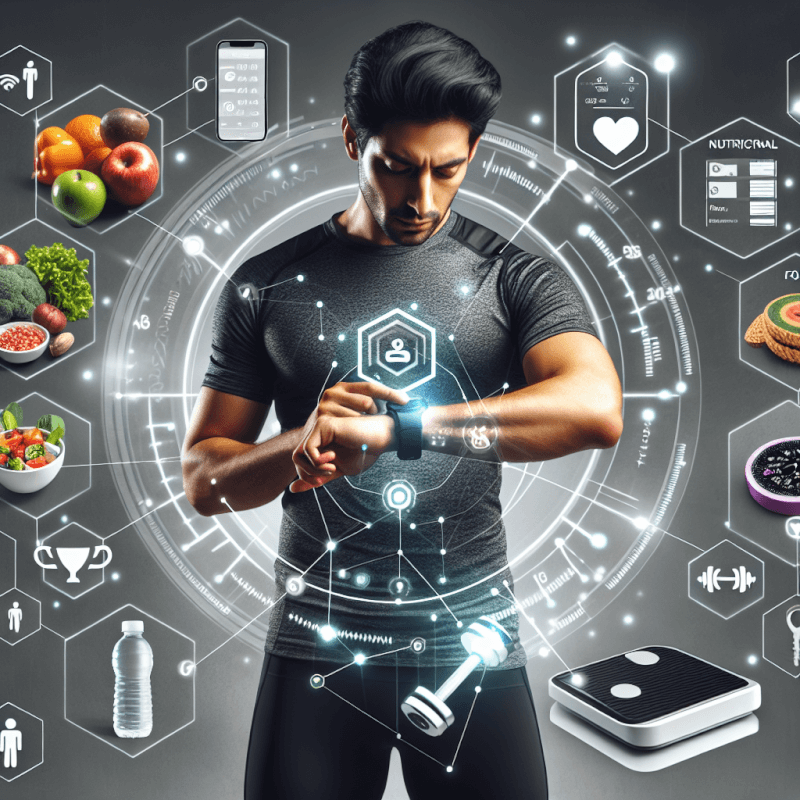
Potential Challenges and Limitations of Technology for Nutrition and Fitness Tracking
Reliance on Self-Reporting
One challenge of using technology for nutrition and fitness tracking is the reliance on self-reporting. The accuracy of the data depends on individuals accurately logging their meals and workouts. Unfortunately, people may forget to track or underestimate portion sizes, leading to inaccurate data. To mitigate this challenge, be diligent in tracking your information and double-check the details wherever possible.
Inaccuracy of Data
Even with diligent tracking, there can still be inaccuracies in the data provided by tracking apps and devices. For example, the calorie count for a particular food item may vary depending on the source or brand. Additionally, estimations of calories burned during exercise can also be imprecise. Use the data provided as a general guideline rather than an absolute measure, and be adaptable in making adjustments based on your personal experience and results.
Obsessive Behavior and Unhealthy Mindset
While technology can provide valuable insights and motivation, it’s important to be mindful of the potential for obsessive behavior and an unhealthy mindset. Constantly checking and comparing data, obsessing over numbers, or feeling guilty for not meeting specific goals can have negative effects on mental well-being. Remember that technology is a tool to support your journey, but it should not dictate your self-worth or become an obsession. Maintain a balanced and healthy mindset, focusing on overall well-being rather than solely numeric outcomes.
Technology Dependence and Lack of Autonomy
Using technology for tracking nutrition and fitness goals can lead to a dependence on the apps or devices. This dependence can reduce your autonomy and ability to listen to your body’s cues. It’s essential to strike a balance between using technology as a helpful tool and being aware of your body’s needs and signals. Use tracking as a means of gathering data and insights, but also listen to your body and make adjustments as necessary.
Privacy and Security Concerns
When using technology for tracking sensitive personal information, privacy and security should be top concerns. Make sure to choose reputable apps and devices that have a strong track record in protecting user data. Read the privacy policies and terms of service carefully to understand how your information is used and shared. Additionally, be mindful of what information you choose to share online or with others in fitness communities. Protecting your privacy and data security is crucial for maintaining peace of mind throughout your tracking journey.
Future Trends in Technology for Tracking Nutrition and Fitness Goals
Artificial Intelligence and Machine Learning
As technology continues to evolve, artificial intelligence (AI) and machine learning are likely to play a more significant role in tracking nutrition and fitness goals. These technologies can analyze vast amounts of data, provide personalized recommendations, and adapt to individual needs and preferences. AI-powered apps and devices have the potential to offer more accurate tracking, customized workout plans, and real-time coaching, taking the tracking experience to a whole new level.
Integration with Medical Devices
The integration of nutrition and fitness tracking technology with medical devices is expected to increase in the future. This integration allows for a more holistic approach to health, enabling individuals to monitor not only their nutrition and fitness but also their vital signs and other health indicators. Tracking devices that can measure glucose levels, blood pressure, or cholesterol levels will provide a comprehensive picture of an individual’s health and allow for targeted interventions and personalized recommendations.
Virtual Reality and Augmented Reality
Virtual reality (VR) and augmented reality (AR) have the potential to revolutionize the way we track nutrition and fitness goals. These technologies can create interactive and immersive experiences that make tracking and exercising more engaging and enjoyable. VR and AR can transport users to virtual fitness studios or outdoor environments, providing a more realistic and motivating workout experience. These technologies may also be used to simulate healthy eating scenarios, offering interactive education and guidance in making nutritious food choices.
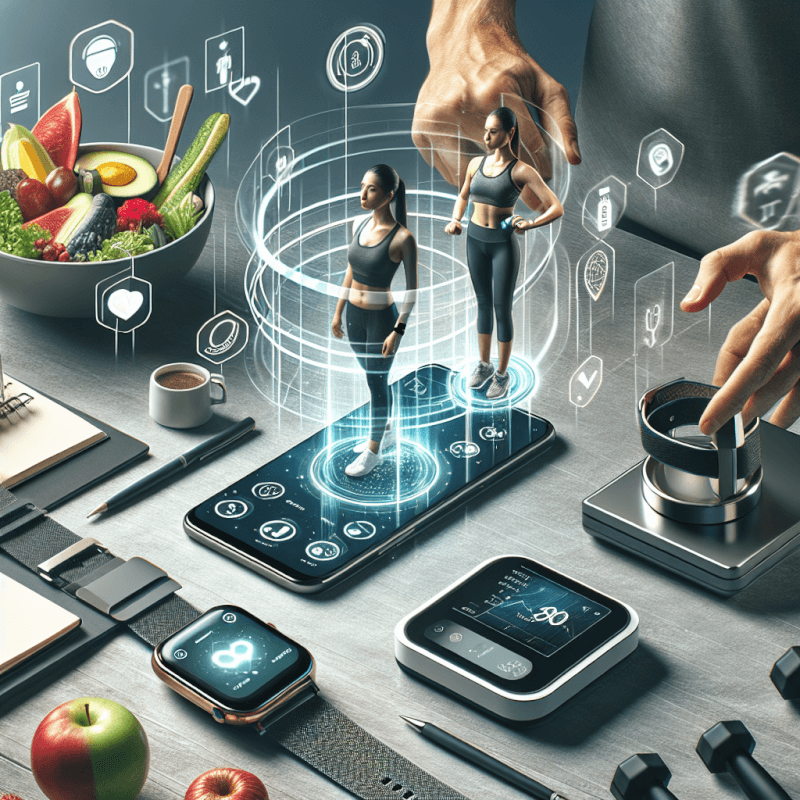
Conclusion
Using technology to track your nutrition and fitness goals offers numerous benefits, including convenience, accuracy, motivation, and personalization. There are many excellent apps and devices available that can help you in your tracking journey, such as MyFitnessPal, Lose It!, Fooducate, MyPlate, Fitbit, and Google Fit. Wearable devices like fitness trackers, smartwatches, and heart rate monitors can provide real-time data and insights to support your fitness goals. When choosing a nutrition and fitness tracking app, look for features like calorie and macronutrient tracking, food databases, meal planning, exercise tracking, community support, and progress analysis. Set effective goals using the SMART method, consult with professionals for guidance, and approach your goals with a sustainable and realistic mindset. Make the most of technology by being consistent, tracking progress regularly, using reminders, finding support, exploring additional features, and leveraging data and insights. Be aware of potential challenges and limitations, such as reliance on self-reporting, data inaccuracies, and maintaining a healthy mindset. As technology continues to advance, future trends in tracking nutrition and fitness goals may include AI and machine learning, integration with medical devices, and virtual reality and augmented reality experiences. Embrace the opportunities technology provides, but remember to always maintain balance, privacy, and your own autonomy in your health journey.

